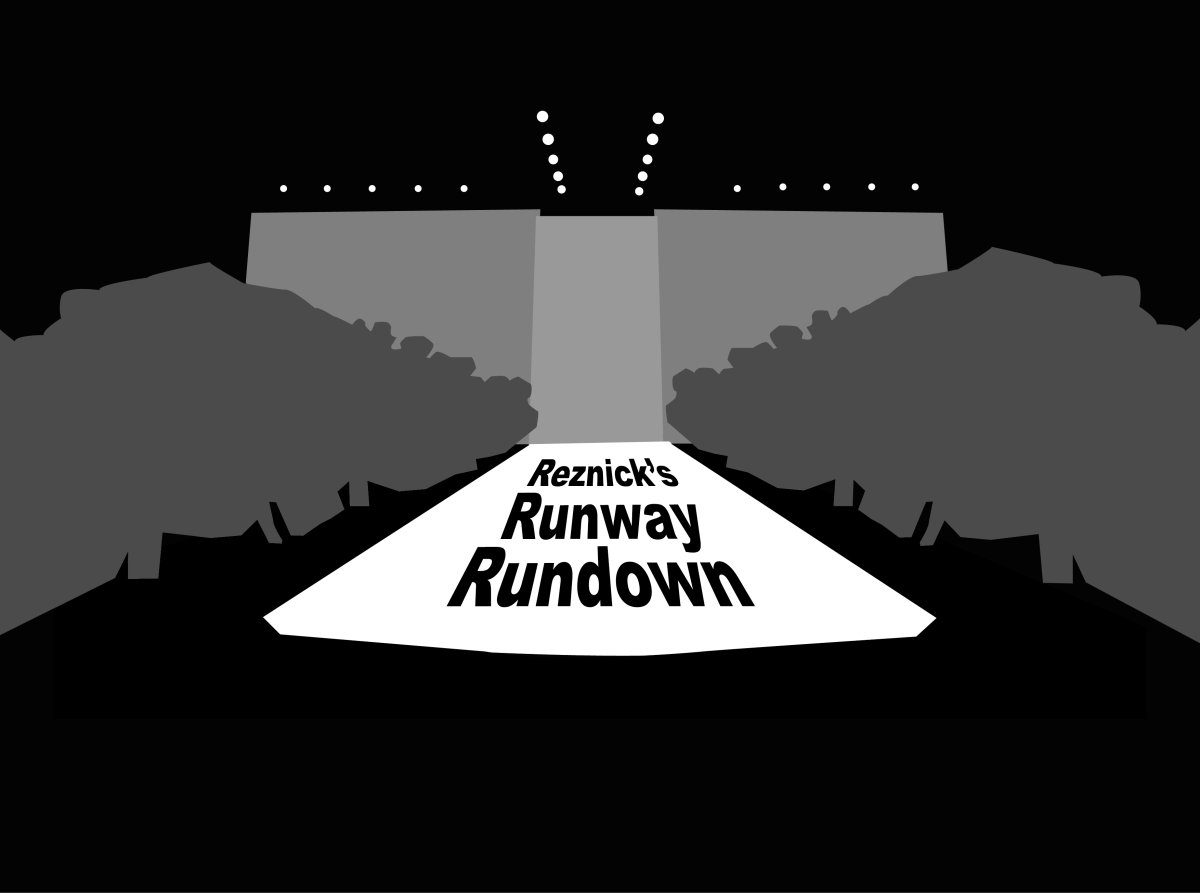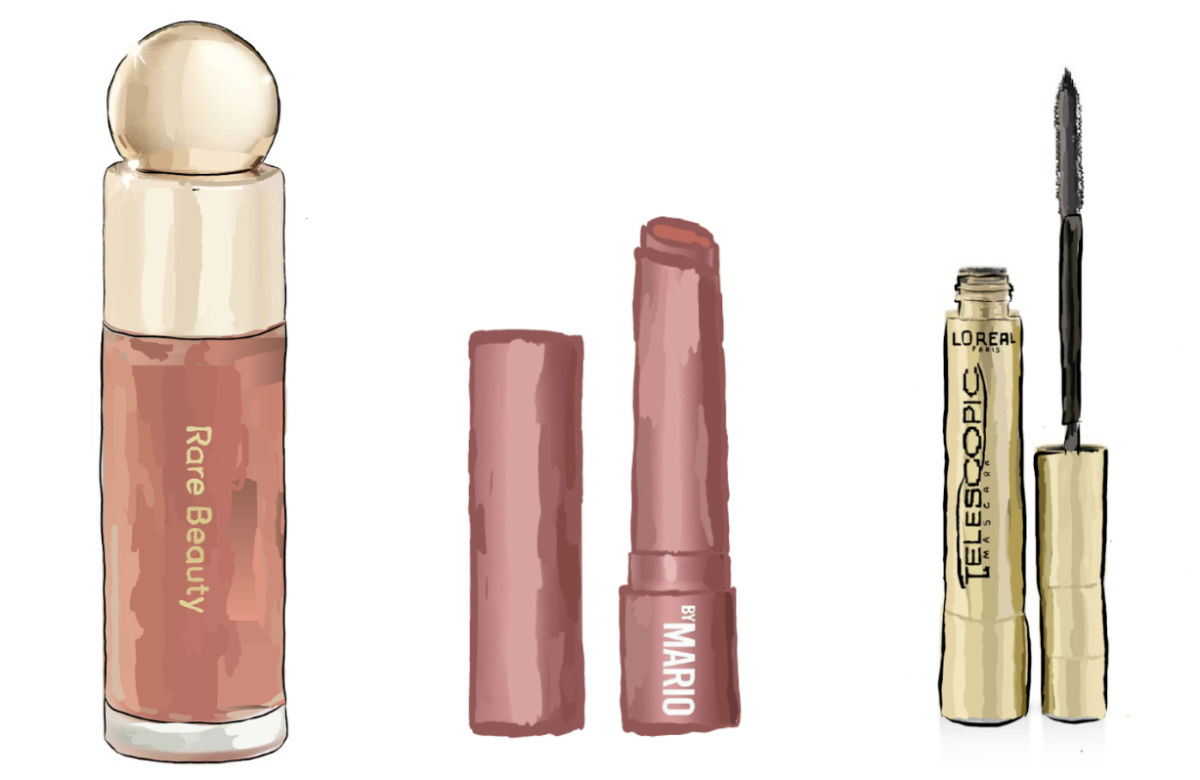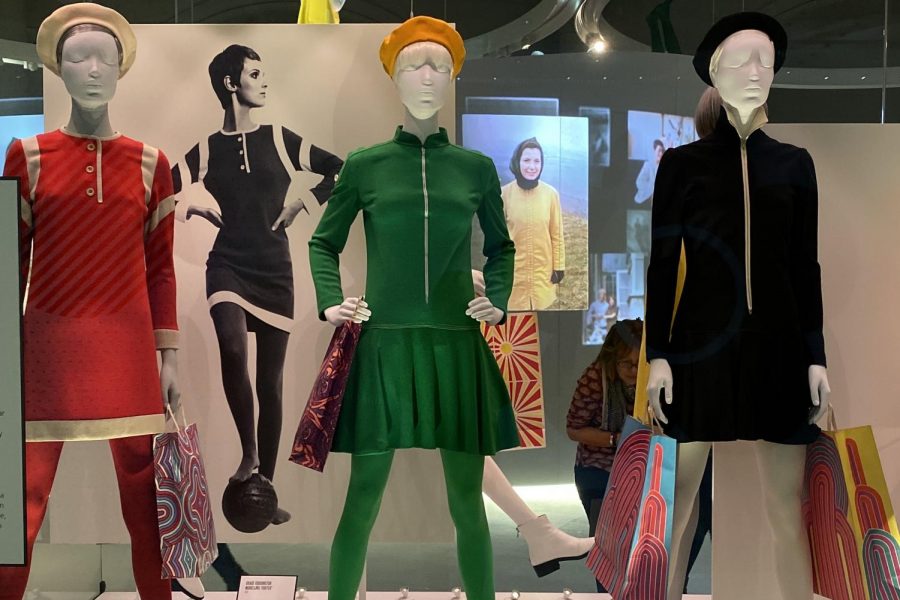Mary Quant was one of the originators of the famous 1960s mod look. Therefore it was no surprise that stepping into the exhibition named after her transported me into that very time.
Quant is a fashion designer whose most notable works were influenced by mod subculture, which initially originated from London and quickly spread throughout post-World War II Great Britain. It was a popular subculture mostly adopted by Britain’s working-class youth, and these mods could typically be identified by clothing consisting of bold colors, thin ties, or shorter-than-ever miniskirts.
With fashion trends from past decades making recent comebacks, “Mary Quant” exhibits designs from an era that can still be appreciated today.
Music plays in the background of various black and white documentaries running throughout the exhibition, and multiple cases display Quant’s fashion designs. The exhibition is split across two floors. The ground floor is seemingly tighter than the immaculate white, open second floor where Quant’s vivid designs speak for themselves.
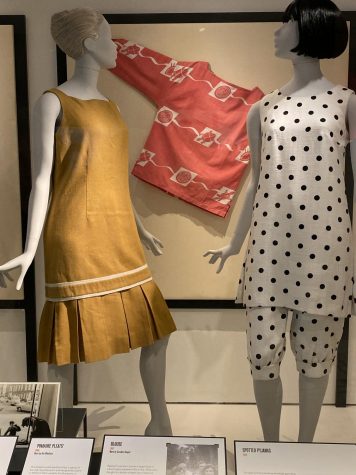
One of the first non-clothing items displayed in the exhibition includes Quant’s sketchbook filled with her designs from when she was as young as just 14 years old. The book is showcased near to items such as fully polka-dotted pajamas and a bright pink Hawaiian-style blouse as if to symbolize Quant’s everlasting sense of playfulness.
Quant’s collections were always thought of as high fashion on a budget, as her revolutionary designs, which helped shape 1960s fashion was priced relatively low.
One of Quant’s most striking collections, known as the “Ginger Group,” is displayed in the center of the first floor of the exhibition. Several mannequins model the collection with typical mod hairstyles resembling Quant’s fashion-forward clientele.
The collection resembles sportswear as there are few complicated details on the ensembles, making them attractive to customers accustomed to comfortable clothing, all while pushing their boundaries and encouraging them to try bolder colors.
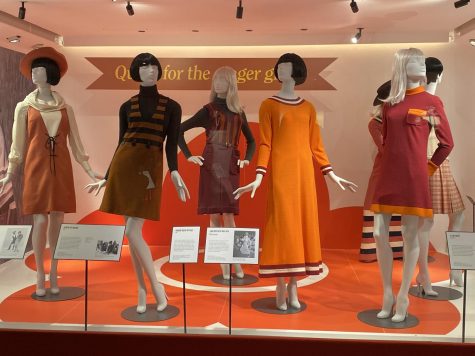
Even though the vibrant clothing was playful and striking on its own, there were other aspects of presentation that leaned on Quant’s boundary-pushing aesthetic.
One of the most memorable instances of such presentation was how the “Victorian-Style Two-Piece” – an ensemble inspired by a classical and more conservative style – was displayed with its mannequin appearing to be walking a lobster on a leash.
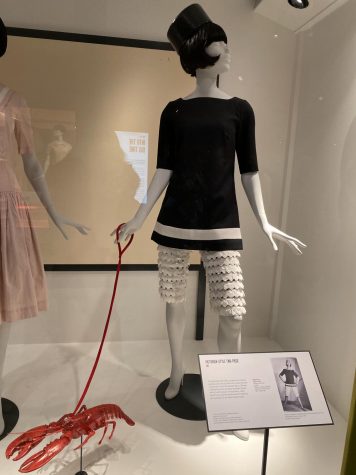
This was easily the most unexpected part of the exhibition, but the second floor held more unconventional aspects of Quant’s legacy, which were essentially unpredictable.
Quant was also known for creating an affordable range of high-quality makeup, and the advertisement campaigns of her products were also featured in the gallery, some of which being humorous and simplistic, yet effective and visually appealing.
One of my favorites included the striking advertisement used to promote Quant’s “Tearproof Mascara.”
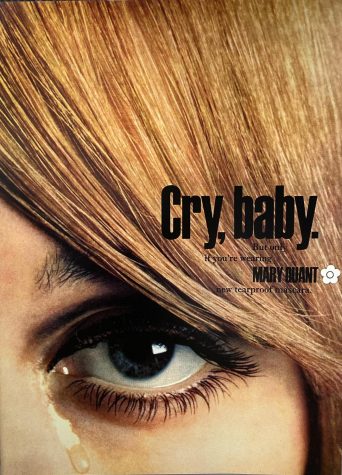
If a makeup range was not already out of the ordinary for viewers, then Quant’s next product range was sure to come as a surprise.
Quant not only created fashion for working women and women on a budget, but also for younger children.
In the 1970s, Quant practically created a miniature world to accompany her fashion empire by designing a doll named Daisy.
The doll had various models, outfits, and accessories that were displayed in the exhibition, some of which even stood next to typical mannequins to depict the high fashion that Quant supplied for her Daisy doll range along with her regular audience.
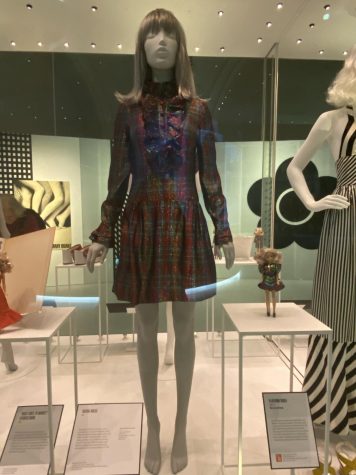
“Mary Quant” displays dozens upon dozens of outfits and other products by the designer, making it perfect for anyone into fashion, design, toys, and makeup. While most fashion exhibitions mainly focus on one theme, “Mary Quant” encapsulates the multifaceted story of a designer with unmatchable quirkiness and fun that has spanned over decades to today.
Mary Quant is showing at the Victoria and Albert Museum until Feb. 16, 2020. For more information on the exhibition, visit https://www.vam.ac.uk/exhibitions/mary-quant.


